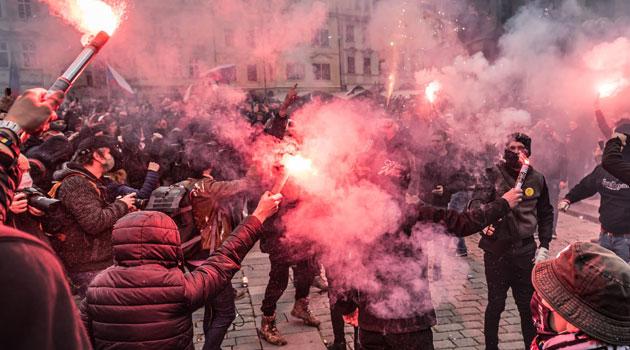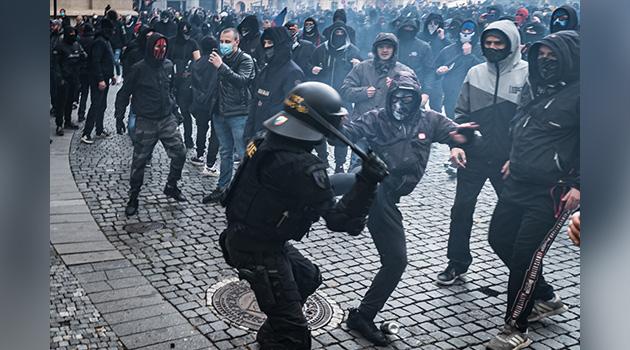Czechs to protest COVID-19 measures on national holiday tomorrow - including neo-Nazis reviving antisemitic tropes

News server Manipulátoři.cz has reported that among the demonstrators who will protest on 17 November against the Czech Government’s measures in response to the COVID-19 pandemic there will once again be a contingent of neo-Nazis. “It’s time to take our country back. Citizens, tradesmen, doctors, lawyers, firefighters, students, senior citizens, let’s stop this together!” announces a poster for the demonstration being circulated by a Facebook page called “Boj pokračuje” (“The Fight Continues”), which goes on to say that “The time for change is coming!!! […] Together we fight against the totalitarian practices of this Government!!! Against lžidokracie!!! Let’s stand up to this neo-Marxist Government of chaos and lies!!!”
The antisemitic expression “lžidokracie” in Czech is a favorite among neo-Nazis. The word “lež” in Czech means “lie”, while the word “Žid” means “Jew”, so the term can roughly be translated as “rule by lying Jews”.
This term was once used by the ultra-right Workers Party (DS) on one of their campaign posters. The DS was subsequently dissolved by the Czech Supreme Administrative Court in 2010 because it was a neo-Nazi party continuing Hitler’s Nazism.
DS members then joined the “Workers Social Justice Party” (DSSS). In 2010 news server Romea.cz reported that the DS had also been recycling symbols used by Hitler’s Nazis, including on the campaign poster referencing “rule by lying Jews”.
The Facebook page “Boj pokračuje” references a website called the “Institute for a National Education” (Národně vzdělávací institut) which for many years has been a hotbed of antisemitic and Nazi literature, including Czech translations of Mein Kampf, the infamous anti-Jewish forgery called The Protocols of the Elders of Zion, and other disinformation in the form of denying the Holocaust, etc.
The “Institute” is also associated with neo-Nazi activity. In 2007, for example, its website published something called a “Partial list of Jews and Jewish half-breeds in politics in the Czech and Slovak Federative Republic, the Czech Republic and the Slovak Republic after 1989”.
That same website gave space to a pamphlet by Jiří Gaudin entitled “The Final Solution to the Gypsy Question in the Czech Lands”. The author proposed Romani people be deported from the Czech Republic in that publication.
Hooligans and Nazis
Neo-Nazis, including hardcore football hooligans, incited street fighting during the most recent demonstration against the Government’s measures to address COVID-19 on the Old Town Square in Prague, injuring several police officers, among other matters. Their action was accompanied by the disinformation that the conflict was begun by the Czech Police.
According to all the video footage available on the Internet, including footage posted by those who participated in the street fighting, the brawl was begun by the football hooligans present, who assaulted a female police officer. According to Barbora Vegrichtová, an expert on the Czech extremist scene and graduate of the Police Academy, it was a typical clash between extremists and police of the kind the Czech Republic experienced during the 1990s and the first decade of the new millenium.
“The symbols on the clothing and the slogans used by some participants were of a hateful character that is normally used especially by the far right extremist scene, hooligans, or similar criminal subcultures. The overal dynamic of clashes, consuming alchohol, the denigration of and assaults on police officers, throwing objects and committing other attacks, both verbal and non-verbal, are characteristic of such situations,” the expert said.
The extremist scene’s connection to football hooligans, according to the expert, has historical roots in the Czech environment, especially with right-wing extremists, whether it takes the form of membership in such structures or the informal sharing of ideas and opinions, especially those with an antisemitic, racist, or xenophobic subtext. This is usually done either during demonstrations, through the symbols used on those occasions, or on social media.
